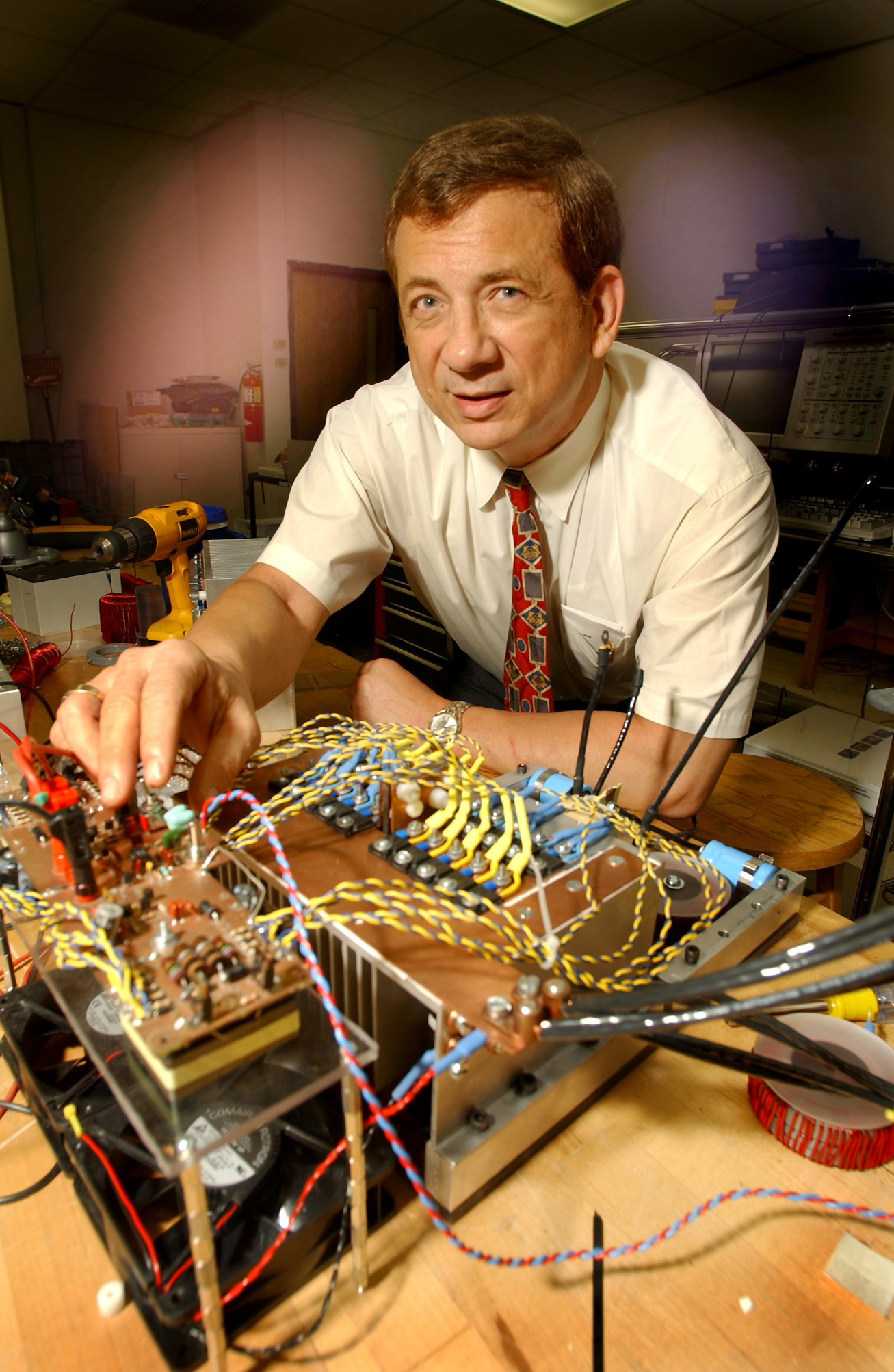Contact: Phil Hearn

STARKVILLE, Miss.--America's war-fighting ability on remote battlefields is getting a jolt from power electronics technology developed by researchers at Mississippi State University's Center for Advanced Vehicular Systems.
CAVS scientists Marshall Molen and Mike Mazzola are harnessing the internal combustion engine of high-mobility vehicles such as the Army's Humvee* to generate electricity for powering on-board radar systems in rugged, combat environments.
"Today, the Army must tow a Sentinel radar system behind a Humvee with a large, separate generator as the power source," said Molen, the project's principal investigator. "If it breaks and you're in the middle of Iraq or wherever, you're in trouble.
"We have prepared a retrofit kit that will generate electrical power on that battlefield," he added. "These kits provide electrical interface with the vehicle to power a radar system or field hospital units, or just provide back-up emergency power."
The MSU technology was developed over the past four years through CAVS' participation in the Army Radar Power Technology Program. Located at the U.S. Army Space and Missile Defense Command in Huntsville, Ala., the multi-million-dollar program produces Humvee-powered radar systems for rapid, sustainable deployment in the field.
"All combat systems of the future will be judged by their ability to support a forward deployed, highly mobile combat force," said Mazzola.
In a definitive patent license agreement recently executed, Diversified Technology Inc. has acquired the Tactical Mobile Power Technology from MSU. The Ridgeland company will modify, repackage and mold it into hardened combat-ready equipment.
The university will share in royalties generated by commercialization of the 10-kilowatt Vehicular Power Source (VPS-10K).
"We cannot emphasize enough our appreciation for the Center for Advanced Vehicular Systems cooperation with the technology transfer phase of this program," said DTI President A. Patrick Busby. The Ergon Inc. company he leads has been a leading designer and manufacturer of industrial computing for more than 33 years.
MSU President Charles Lee added: "This is a terrific example of the university's increasing focus on research that has the potential for commercialization within the state. We believe a strong partnership between MSU and private industry will reap positive economic benefits, create more jobs and result in a better quality of life."
According to Charles Rivenburgh, MSU's director of intellectual property and technology licensing, the university holds more than 60 patents and supports a number of start-up companies through incubator facilities located at the nearby Thad Cochran Research Technology and Economic Development Park.
A major component of CAVS' power electronics technology is based on MSU's silicon carbide power device development program--which provides rugged, high-power, high-temperature, high-frequency, robust semiconductor capabilities for outer space missile defense and other military applications, as well as for civilian use.
Although not incorporated into the module initially marketed by DTI, Mississippi State researchers predict silicon carbide will be used in future generations of the device.
"In the future, I think you're going to see this technology applied to even more practical public uses in cars, trucks and SUVs," said Molen. "We'll be able to provide more power in smaller packages because of the (silicon carbide) transistors."
SemiSouth Laboratories Inc., a Starkville-based start-up company built on MSU technology, is a leading manufacturer of silicon carbide electronics and electronic material (epitaxy). The technologies historically were developed by researchers from MSU's department of electrical and computer engineering.
"Mississippi State has become a leading developer and manufacturer of silicon carbide electronics and electronic materials, which provide the basis of the research effort by Drs. Mazzola and Molen, and CAVS co-inventor Jim Gafford," said Colin Scanes, MSU's vice president for research.
CAVS was created by the State of Mississippi in 1997 to research and develop design and manufacturing means and methods for producing superior quality vehicles with advanced features and functions at reduced costs. New and existing computer software was utilized in an automated environment to help design engineers integrate alternative power systems on military vehicles. The center is led by veteran MSU faculty member and administrator Donald Trotter.
The MSU researchers successfully demonstrated a system that could harness the internal combustion engine power of a high-mobility, multi-wheeled military vehicle by replacing its low-voltage alternator with one that has much greater current capacity. The electronics interface then was installed to power the Army's Sentinel radar system.
DTI initially worked to assist MSU in packaging the prototype hardware into solutions that could meet military environmental and operating specifications. MSU tests showed it could reduce the size and mass of current hardware by about 50 percent.
"The significance of this development is realized by the fact that this small 17-inch-by-19-inch-by-8.25-inch module [the VPS-10K] replaces a 10-kilowatt diesel generator that currently must be towed by trailer," said DTI vice chairman Barrie McArthur, who heads his company's On Board Vehicle Power Project.
"By eliminating the need to tow trailer power, the warfighter can now travel through off-road terrain, which previously was prohibitive," he pointed out. "It is not subject to trailer rollover accidents, which saves lives, and it eliminates the cost of a diesel generator and accompanying trailer."
NEWS EDITORS/DIRECTORS: For more information, contact Dr. Molen at (662) 325-3912 or molen@ece.msstate.edu; Dr. Mazzola at 325-3658 or mazzola@ece.msstate.edu; or Joel Deer of DTI Marketing Communications at (601) 856-4121 or joeld@dtims.com.
------------------------
*Humvee is the nickname for the Army's High-Mobility Multipurpose Wheeled Vehicle; the official acronym is HMMWV.